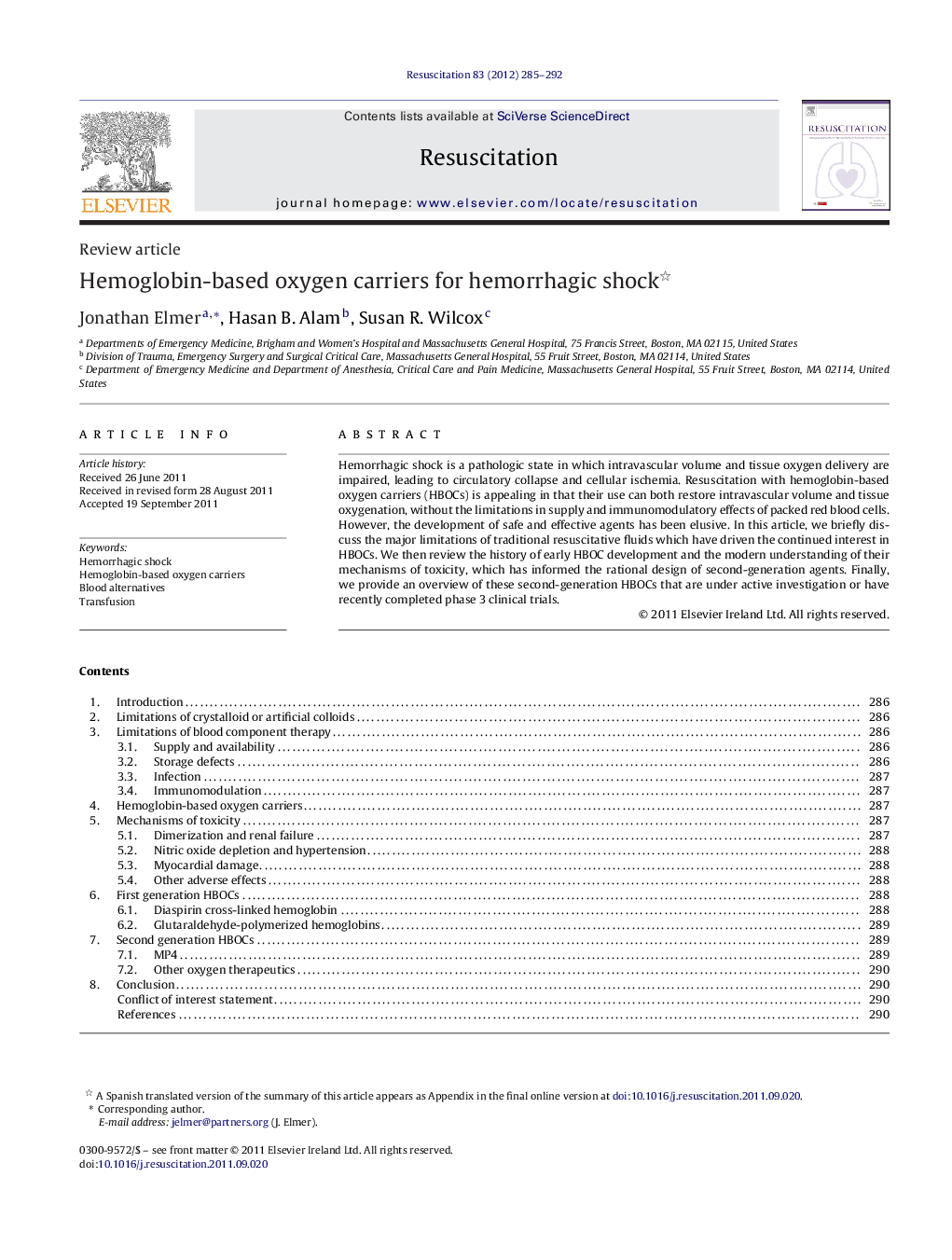| Article ID | Journal | Published Year | Pages | File Type |
|---|---|---|---|---|
| 3008428 | Resuscitation | 2012 | 8 Pages |
Hemorrhagic shock is a pathologic state in which intravascular volume and tissue oxygen delivery are impaired, leading to circulatory collapse and cellular ischemia. Resuscitation with hemoglobin-based oxygen carriers (HBOCs) is appealing in that their use can both restore intravascular volume and tissue oxygenation, without the limitations in supply and immunomodulatory effects of packed red blood cells. However, the development of safe and effective agents has been elusive. In this article, we briefly discuss the major limitations of traditional resuscitative fluids which have driven the continued interest in HBOCs. We then review the history of early HBOC development and the modern understanding of their mechanisms of toxicity, which has informed the rational design of second-generation agents. Finally, we provide an overview of these second-generation HBOCs that are under active investigation or have recently completed phase 3 clinical trials.
